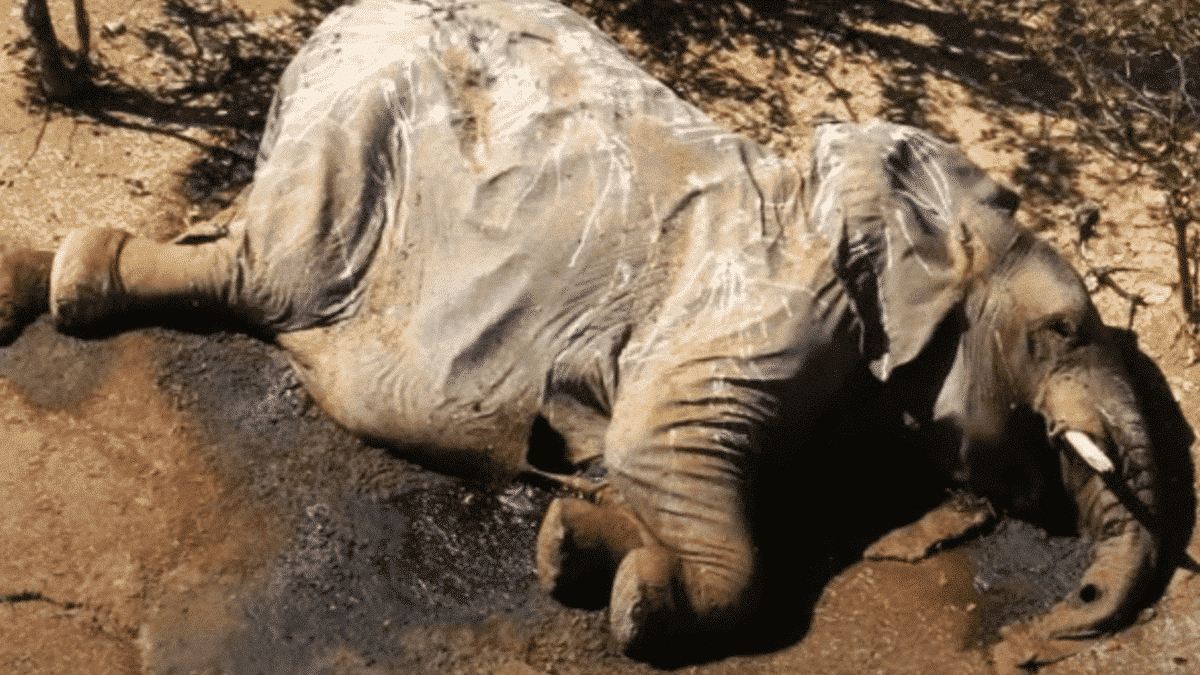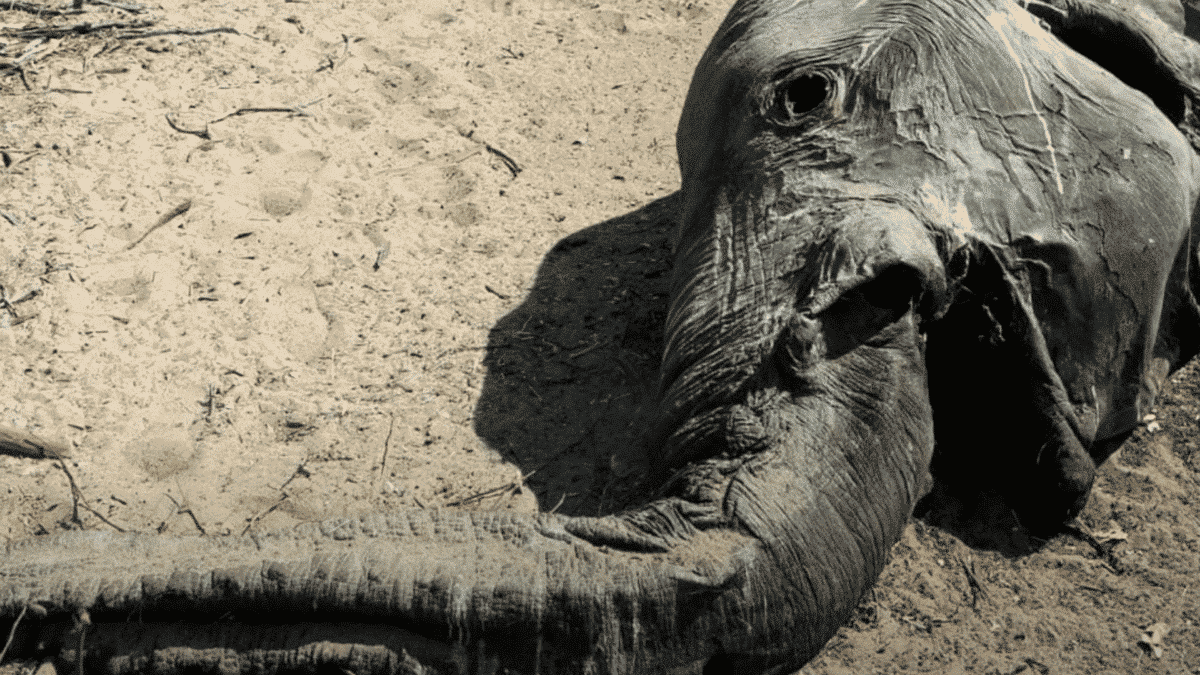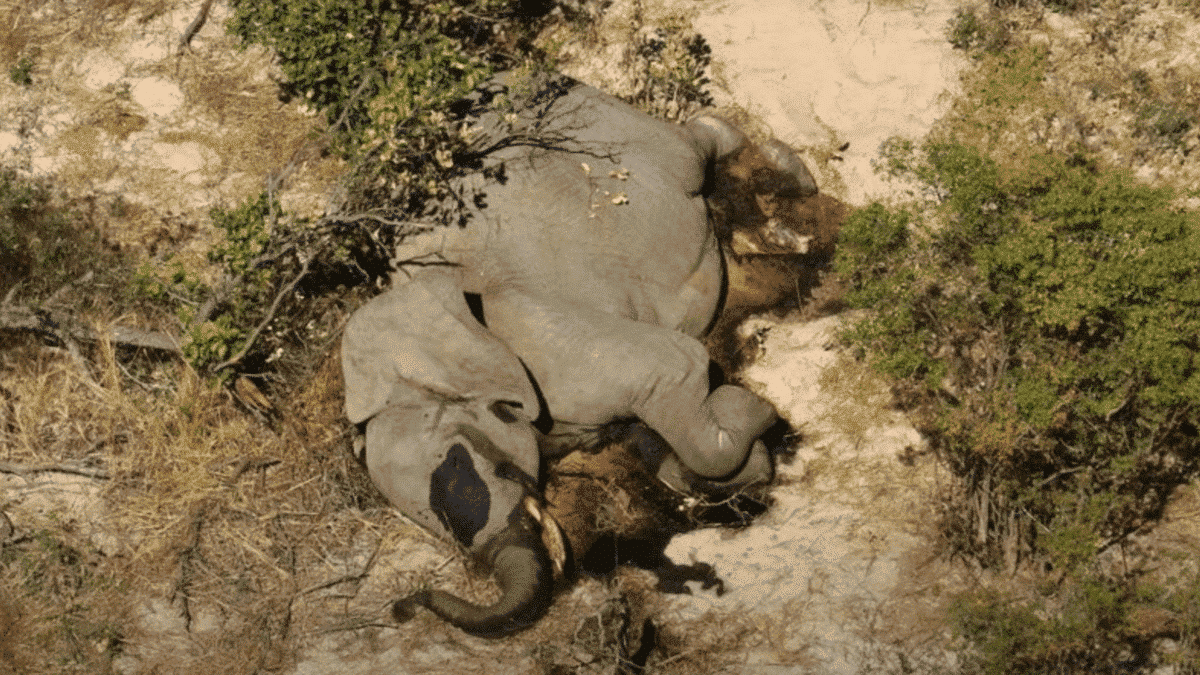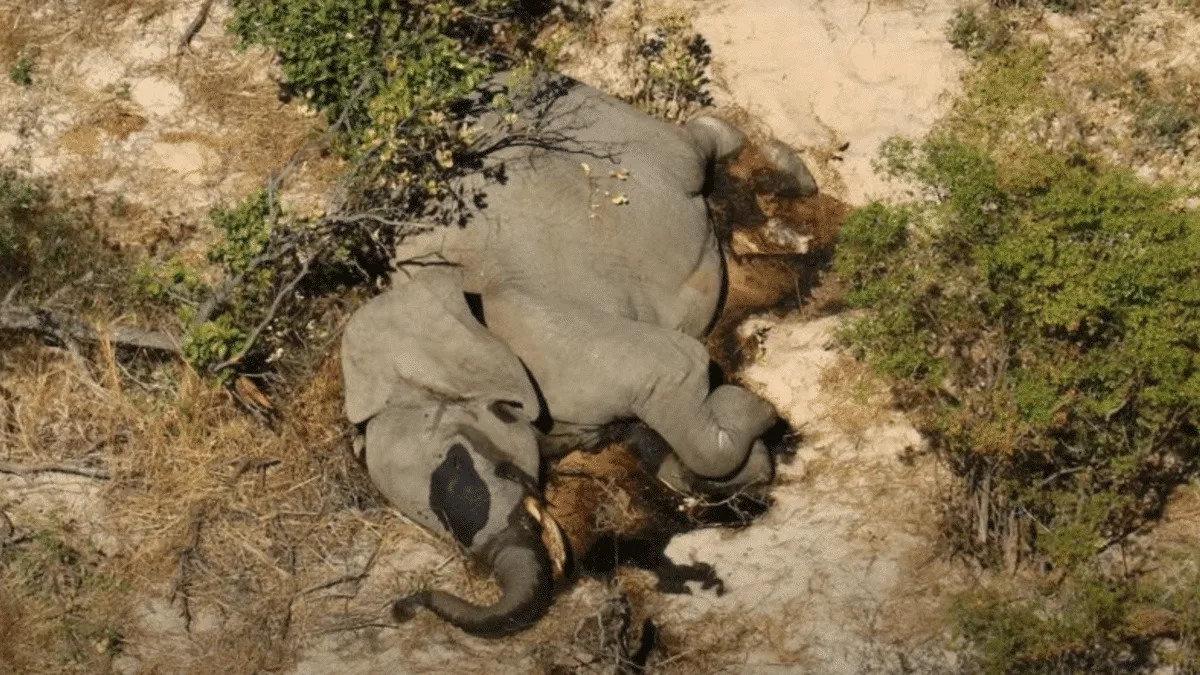Welcome to ‘Investigating 350+ Mysterious Elephant Deaths in Southern Africa‘
In 2020, a perplexing and alarming series of events occurred in Southern Africa: over 350 elephants were found dead in Botswana’s Okavango Delta, with an additional 35 perishing in Zimbabwe. This mass mortality event of the continent’s gentle giants sparked a significant investigation by conservationists and scientists alike.

Discovery of Bisgaard taxon 45
The breakthrough came when a bacterium, Bisgaard taxon 45, was identified as the cause of death in a subset of these cases. This pathogen, part of the Pasteurellaceae family, was found to induce septicemia, leading to the rapid decline and subsequent death of the infected elephants. The findings, published in a reputable scientific journal, provided a starting point for understanding the sudden die-off.
The Challenge of Postmortem Examinations

Conducting post mortem examinations on elephants is a formidable task, made more difficult by the African heat which accelerates decomposition. The window for collecting viable tissue samples is narrow, necessitating a swift response from wildlife veterinarians and pathologists. The successful identification of Bisgaard taxon 45 was a testament to the diligence and rapid action of the teams involved.
Environmental Stress and Its Role
The research suggested that environmental conditions played a role in the outbreak’s severity. Drought conditions, scarcity of food and water, and the stress of increased competition for these resources likely compromised the elephants’ immune systems. While these stressors are not directly lethal, they can exacerbate the effects of pathogens like Bisgaard taxon 45.
In The News
Conservation Concerns
African elephants are classified as endangered, with their numbers dwindling due to poaching and habitat loss. The addition of a bacterial pathogen to the list of threats they face adds another layer of complexity to conservation efforts. The incident highlighted the importance of disease surveillance and rapid response mechanisms in wildlife conservation strategies.
The Mystery of Transmission
One of the remaining questions is how Bisgaard taxon 45 spreads among elephant populations. The bacterium’s presence in other animal species, such as antelopes and large carnivores, suggests a potential vector or environmental reservoir. Understanding the transmission dynamics is crucial for preventing future outbreaks.
Implications for Ecosystem Health

Elephants play a keystone role in their ecosystems, affecting the environment in ways that benefit other species. The loss of even a single elephant can have ripple effects throughout the ecosystem. Therefore, the mass die-off not only represents a loss of individual animals but also a potential shift in the ecological balance.
The Global Response
The international conservation community has responded with a call for increased funding and resources for wildlife health monitoring. The incident has underscored the need for global collaboration in addressing wildlife diseases, which can have transboundary impacts.
Long-Term Effects on Elephant Populations
The long-term effects of this bacterial pathogen on elephant populations are not yet fully understood. Continued monitoring and research are necessary to assess the impact and to develop interventions that can protect these animals from similar threats in the future.
Conclusion
The identification of Bisgaard taxon 45 as a cause of elephant mortality in Southern Africa is a significant step forward in wildlife disease research. It serves as a reminder of the fragility of our natural world and the interconnectedness of environmental health and wildlife well-being. As the conservation community grapples with this new challenge, the incident reinforces the importance of investing in wildlife health research, enhancing disease surveillance, and fostering international cooperation to safeguard the future of African elephants and the ecosystems they support.
You May Also Like:
- African Elephant vs. African Buffalo
- Watch: An Massive Elephant Charges at a Safari Vehicle
- Elephant Crashes the Pool Party
Join our Forum for free today!

- Surprise Hippo Attack on Three Lions - July 21, 2024
- USA’s Best Wildlife Conservation Success Stories - July 14, 2024
- The Incredible Bird with Sunflower Eyes - July 13, 2024


